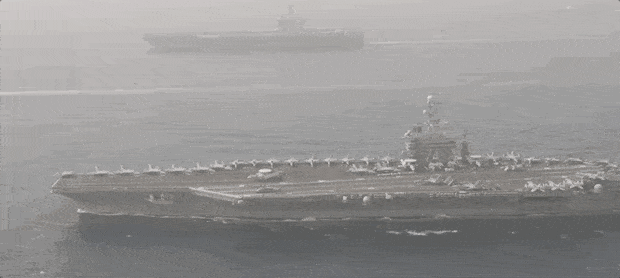- Lazy Leverage
- Posts
- Tom Cruise Doesn't Cook Pancakes
Tom Cruise Doesn't Cook Pancakes
Our last five members were a trailer manufacturer, self-funded searcher who acquired an events company, a landscaper, & a property tech firm.
An aircraft carrier is a marvel of engineering.
But what's truly remarkable about these floating cities is not just their size or endurance, but their organization.

Consider this: a typical aircraft carrier has around 70 fighter jets.
To keep those 70 jets in the air, the carrier has a total crew of over 5,000.
For every fighter pilot, there are more than 70 sailors and officers working to make that pilot's mission possible.
A support ratio of SEVENTY to ONE.
Now, let's talk about those fighter pilots briefly.
The path to becoming a fighter pilot is long and incredibly selective.
It starts with a four-year degree, often in a technical field.
Then there's Officer Candidate School, followed by flight school, which can take up to two years.
And that's just the beginning.
There's advanced training on specific aircraft, ongoing physical and mental conditioning, and constant skill sharpening.
All told, it can take a decade and millions of dollars to train a single fighter pilot.
These are rare and precious human resources.

Now contrast that with the support personnel on an aircraft carrier.
These are the technicians, the mechanics, the logistics experts, the cooks, the medics, and so on.
They are absolutely essential to the functioning of the ship and the success of its mission.
But their training, while rigorous and specialized, is measured in months, not years.
A sailor can become a skilled aviation mechanic or radar operator in a fraction of the time it takes to train a fighter pilot.
This is not to diminish the importance or the skill of these support roles.
They are the backbone of the carrier, and without them, no jet would ever leave the deck.
But it highlights a crucial point: in any high-performance organization, your most skilled and specialized talent is also your most expensive and time-consuming to develop.

So what does this mean for business?
It means that if you're trying to grow and scale your company, you need to think very carefully about how you allocate your human resources.
You need to think like an aircraft carrier, not like a fighter jet.
Too many businesses, operate like they're a squadron of fighter jets (with no support).
Remember SEVENTY to ONE.
This applies to so many different roles - could be sales reps, HVAC techs, CPAs… whatever
This is a recipe for burnout, inefficiency, and ultimately, failure to thrive.
Your top talent, your "fighter pilots", should be focused on the highest-leverage, highest-value activities.
They should be closing deals, designing products, doing trickly installations, and leading teams.
If ANYONE ELSE can do the activity - these folks should not be doing it.
But that's exactly what happens in so many companies.
High-priced, highly skilled talent ends up spending a significant chunk of their time on administrative and support tasks that could and should be handled by someone else.
It's like asking a fighter pilot to refuel their own jet or pack their own parachute.
It's not just a waste of their time, it's a misuse of their skills.
The solution is to build a support structure around your top talent, just like an aircraft carrier builds a crew around its fighter pilots.
This means investing in administrative assistants, project managers, HR coordinators, IT support, and all the other roles that keep a business running smoothly.
Think about it this way: if it takes you a year to develop a top-tier sales executive or manager, then every hour of their time that you free up by providing them with quality support is an hour that you're getting an exponential return on that long-term investment.

On the other hand, if you're constantly letting your "fighter pilots" get bogged down in administrative and logistical tasks, you're not just wasting their time in the short term, you're undermining your long-term growth and burning profits.
You're taking your most valuable and scarce human resources and using them in ways that don't maximize their potential or their impact.
The lesson?
Invest in your support structure.
FLOOD your “fighter pilots” with global talent & support.
Build teams and systems around your top talent so they can focus on what they do best.
Don't just hire "fighter pilots".
Win is not by having the most "fighter pilots", but by having the best support structure to make those pilots successful.
Yallah Habibi,
Jon
Passage of the Week
Ozymandias - Percy Shelley
I met a traveller from an antique land,
Who said—“Two vast and trunkless legs of stone
Stand in the desert. . . . Near them, on the sand,
Half sunk a shattered visage lies, whose frown,
And wrinkled lip, and sneer of cold command,
Tell that its sculptor well those passions read
Which yet survive, stamped on these lifeless things,
The hand that mocked them, and the heart that fed;
And on the pedestal, these words appear:
My name is Ozymandias, King of Kings;
Look on my Works, ye Mighty, and despair!
Nothing beside remains. Round the decay
Of that colossal Wreck, boundless and bare
The lone and level sands stretch far away.”